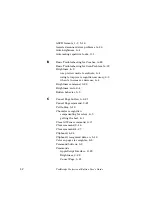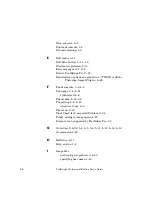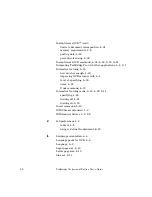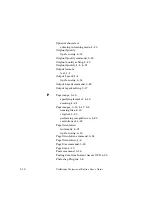
Glossary of Terms
G–7
P
page image—A binary (black and white) representation of a
page stored in computer memory, or on disk in an image file.
TextBridge Pro acquires a page image from a scanner or an image
file (TIFF, PICT) and then begins optical character recognition.
page orientation—In TextBridge Pro preferences, a category of
settings that inform the program about the placement—that is,
the orientation—of print on a page. The available settings are:
Auto; Portrait; and Landscape.
pixel—Short for picture element, one of many individual units
that together make up an electronic picture.
portrait orientation—Describes a page on which lines of print
flow across the more narrow dimension (or width) of the page.
preferences—In TextBridge Pro, the settings that you can
specify to control the document recognition process.
preview—In TextBridge Pro, a mode during which you can view,
zoom, rotate, and zone text and images on a page before
processing. By zoning a page, you instruct TextBridge Pro to
process only the specified text and/or image areas.
Q
questionable words—During OCR, recognized words that
TextBridge Pro is "unsure" about, but has decided to “release”
(spend no more time on). Built into TextBridge Pro OCR is a
confidence threshold, a numerical value. During recognition,
TextBridge Pro assigns a confidence number, based on a number
of factors, to each recognized word. If the assigned number falls
below the confidence threshold, the word is flagged as a
questionable word. See also suspect word.
Содержание TextBridge PRO 8.5
Страница 1: ...User s Guide PRO TextBridge 8 5...
















































